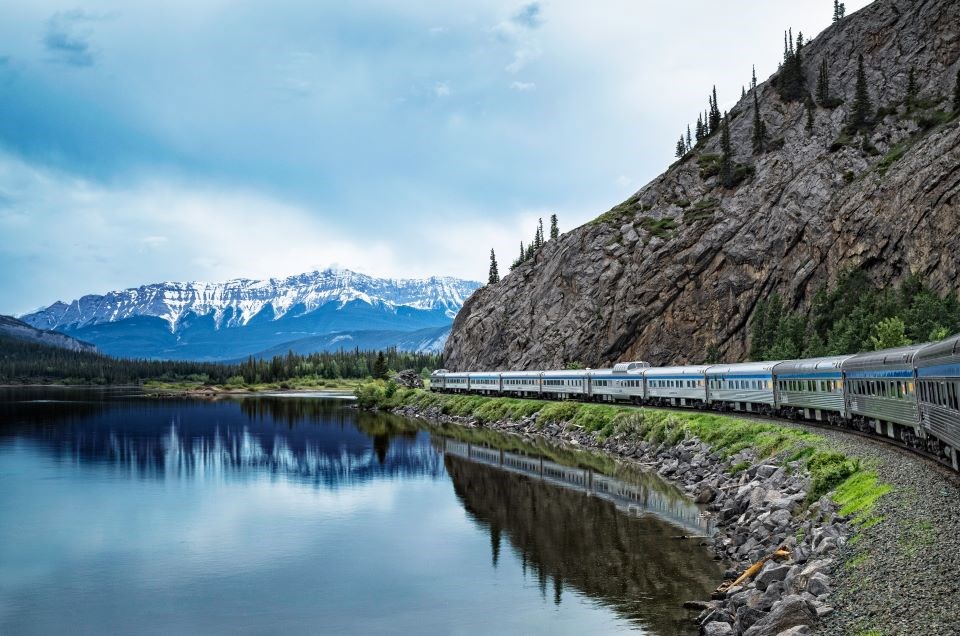“To face today’s challenges, it takes a train.”
So begins the video message announcing Via Rail’s five-year strategic plan called VIAction 2030. Canada’s national passenger rail service provider describes this plan as ambitious, aiming to position the Crown corporation as a best-in-class operator in North America and a leader in integrated mobility at the heart of Canada's passenger journey.
The initiative comes amid its plea to the federal government to fund the procurement of new railcars, which would replace 210 units of the company’s aging fleet.
It also comes along with an effort to shift the momentum toward the long-term benefits of its service against the priority of freight trains that it must compete with on the tracks.
Via Rail sends more than 500 trains every week along 12,500 kilometres of rail, crossing eight Canadian provinces. Ask anyone who has had the pleasure of a ride though and you’ll often hear of repeated delays while freight trains pass on by.
There is, however, a growing number of advocates who are trying to raise the profile of Via Rail for how it offers unique mass transportation to underserved areas and its potential for boosting tourism, all while upholding an environmental leadership that can only be achieved when one vehicle replaces many others.
“Canada was built by rail, and I fundamentally believe in the transformative potential of this industry,” said Via Rail president and CEO Mario Péloquin on the company’s webpage announcing the plan.
“I have the ambition to act now to create meaningful change for our passengers, and this plan gives us a clear roadmap which allows us to aim higher and transform the way we operate.”
The plan itself trumpets how passenger trains are having a moment on the world stage. They are increasingly being recognized as an important vehicle in the global drive to reduce everyone’s collective carbon footprint while providing a more accessible and equitable world, it says.
Among the plan’s objectives are generating a savings equivalent to 15 per cent of its operating deficit, reducing its greenhouse gas emissions by half of what it was in 2005 and increasing its capacity by 18 per cent.
Taylor Bachrach, the NDP’s federal transportation critic and MP for the B.C. riding of Skeena-Bulkley Valley, said the goals are commendable.
“Obviously, they continue to face challenges that are outside their control,” he said.
As a member of the ad hoc Parliamentary Rail Caucus and the Standing Committee on Transportation, Infrastructure and Community, he recently introduced the Rail Passenger Priority Act in Parliament. It calls for an amendment of the Canada Transportation Act that gives passenger rail the priority on the tracks.
Passenger rail priority exists in the United States, he continued. Instituting it in Canada would boost Via Rail’s on-time performance, a key issue that keeps more people from being regular customers.
This is one of Via’s big barriers, he says. With the federal budget offering hope that it would support replacing long-distance railcars, it seems like momentum is growing in its direction.
Bachrach said he hoped the federal government would waste no time with the effort.
“I'm not confident that a Conservative government would follow through, and it's really vital to the long-term existence of public passenger service in this country.”
There is one other major obstacle to overcome: the fact that most of the Via’s usage comes in the Quebec City – Windsor Corridor. This stretch alone contributes two-thirds of Via’s revenue.
The federal government is examining whether to privatize this corridor, effectively excising 90-plus per cent of Via’s current passenger revenue.
“As we've heard from independent experts, that's a pretty untenable future. The government really hasn't provided any sense of what that future would look like, but it's something we're very concerned about,” Bachrach said.
“We're going to keep working on it. I think it's something there's a tremendous amount of public support for passenger rail in this country. It's great to see Via and the government moving ahead with replacing their old trains. I'm hopeful, if not a little bit optimistic.”



